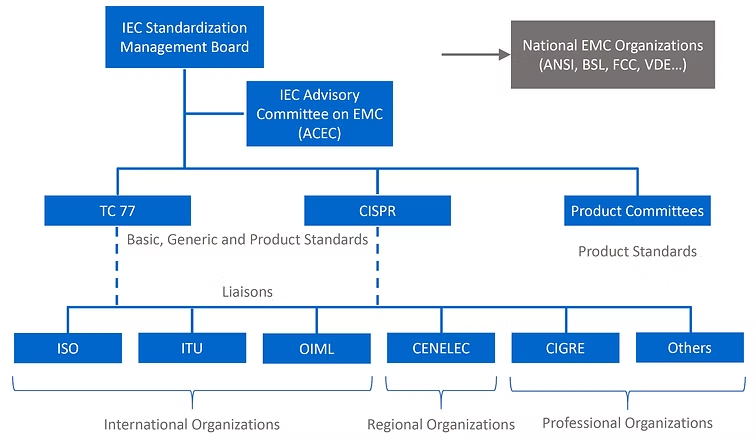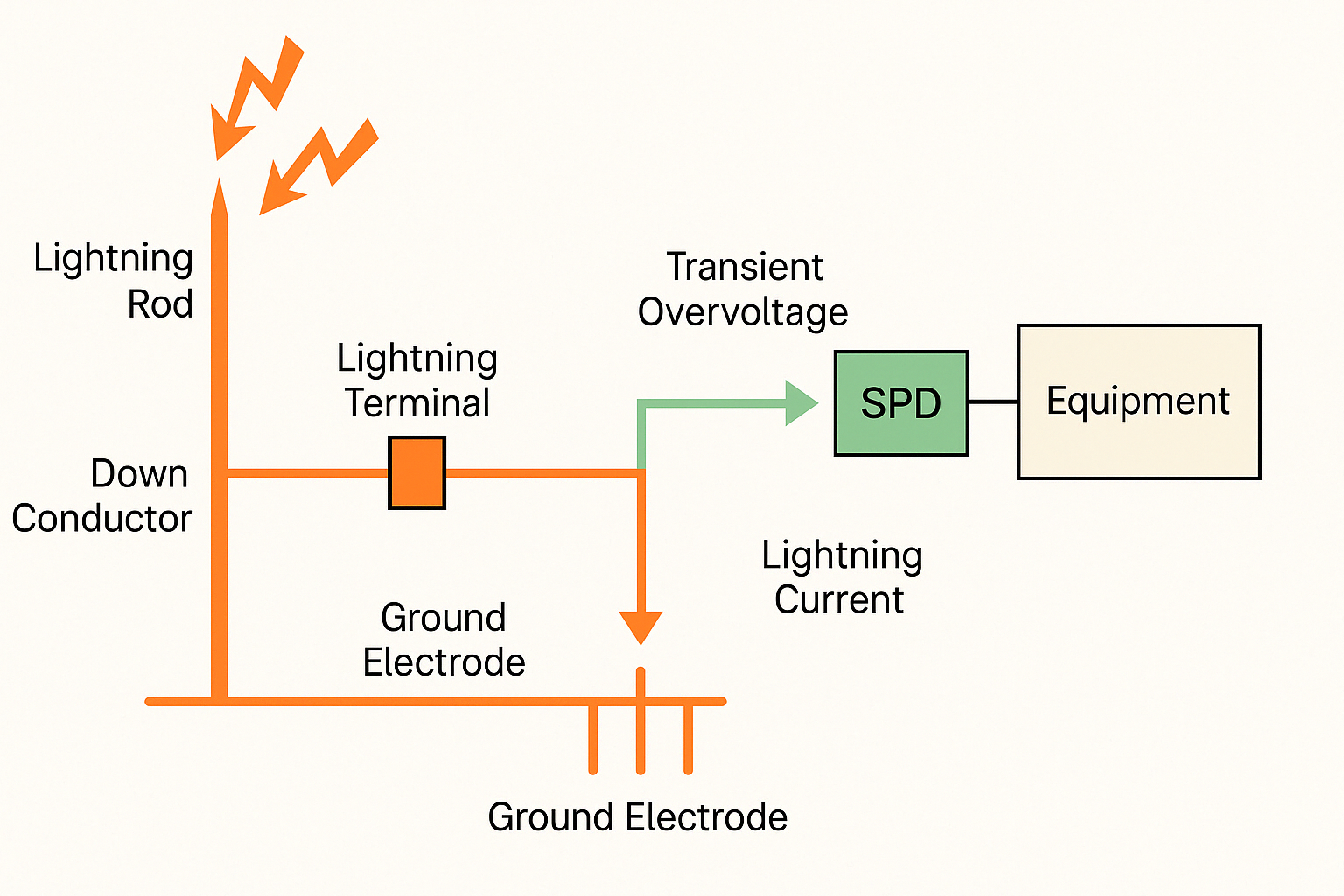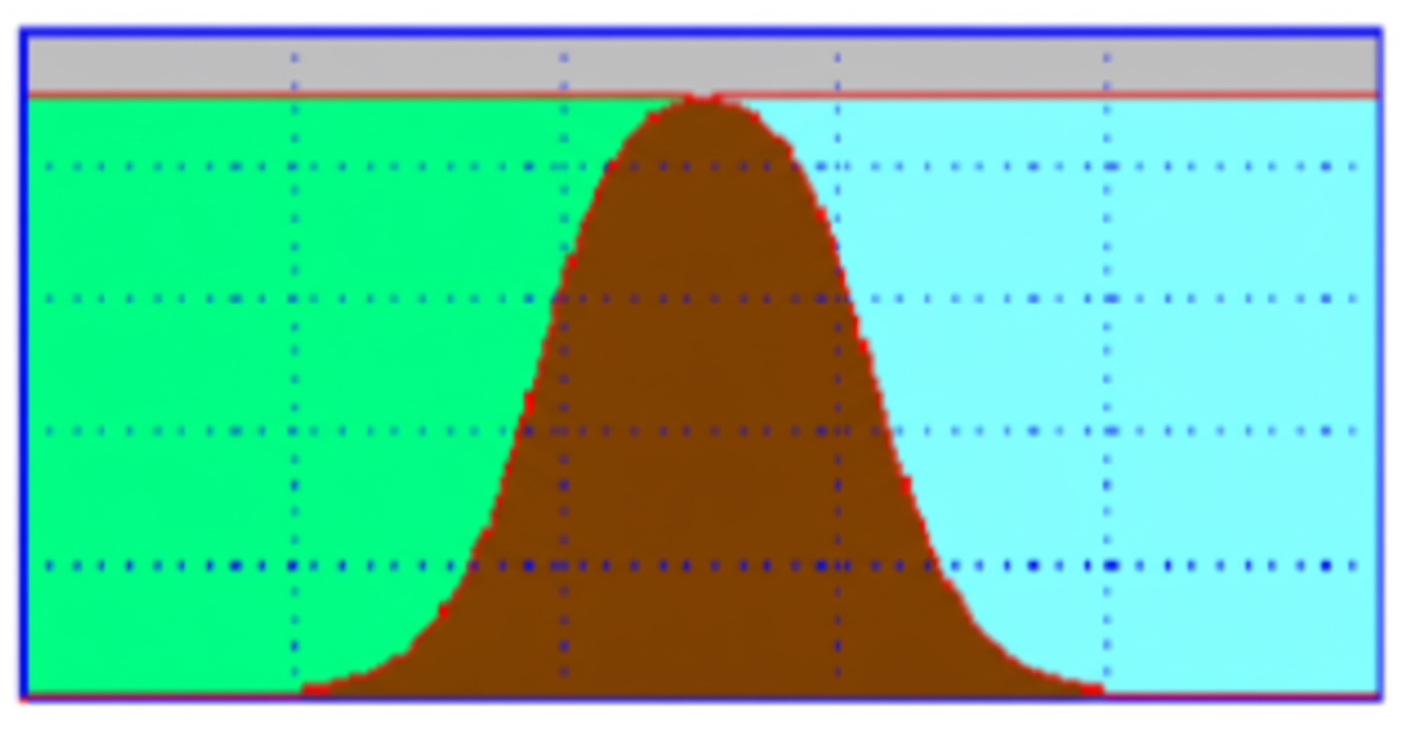
EMC standards follow the International Electrotechnical Commission (IEC) classification approach used by many standards organizations. Broadly, standards are grouped into basic standards, generic standards, and product standards. Product standards are further divided into series product standards and dedicated product standards. Each category addresses both emission (EMI) and immunity (EMS) requirements.
1. Basic EMC Standards
Basic EMC standards define the general and fundamental conditions or rules for achieving electromagnetic compatibility. They apply to all series products, systems, or installations related to EMC, but do not specify product emission limits or immunity pass/fail criteria.
These standards serve as the basis or reference for other EMC standards, such as generic or product standards. Topics covered include terminology, descriptions of electromagnetic phenomena, specification of compatibility levels, general requirements for disturbance emission limits, measurement and test techniques and methods, test levels, and environmental descriptions and classifications.
Typical examples include IEC 61000 and GB/T 17626.
2. Generic EMC Standards
Generic EMC standards address electromagnetic compatibility requirements for specific environments. They specify minimum basic requirements and measurement/test procedures applicable to all products or systems operating in that environment. When a product lacks a series or dedicated product standard, a generic standard may be applied.
Generic standards classify environments into two main categories:
- Residential, commercial, and light industrial environments
- Industrial environments
Generic standards must reference basic EMC standards, since basic standards provide the fundamental measurement and test methods and equipment requirements. Generic standards include applicable emission limits, immunity performance criteria, and corresponding measurement and test provisions.
3. Product EMC Standards
Product EMC standards are divided into series product standards and dedicated product standards based on the scope and characteristics of the products concerned.
Series product standards apply to a group of similar products, systems, or installations that can follow the same EMC standard. They define specific EMC requirements (emissions and immunity), limits, and measurement/test procedures for a given product category. Compared with generic standards, series product standards include more specialized and detailed performance requirements and operating conditions.
For example, EN 55014, EN 55015, EN 55022, EN 55011, and EN 55013 are standards for measuring radio disturbance characteristics and limits for household appliances and power tools; lighting equipment; information technology equipment; industrial, scientific and medical RF equipment; and audio and broadcast television receivers, respectively. These represent emission limit requirements for major product categories.
Series product standards should adopt the measurement and test methods specified in basic EMC standards. Their tests and limits or performance criteria must be compatible with generic EMC standards. System product EMC standards take precedence over generic standards. Series product standards provide more specialized and detailed performance criteria than generic standards.
Dedicated product standards are developed for specific products, systems, or installations. They consider special conditions required by product characteristics and follow the same rules as series standards. Dedicated standards take precedence over series product standards; deviations from specified emission limits are permitted only in exceptional cases. When defining immunity requirements, product-specific functional characteristics must be considered, and dedicated standards should provide precise performance criteria.
 ALLPCB
ALLPCB







